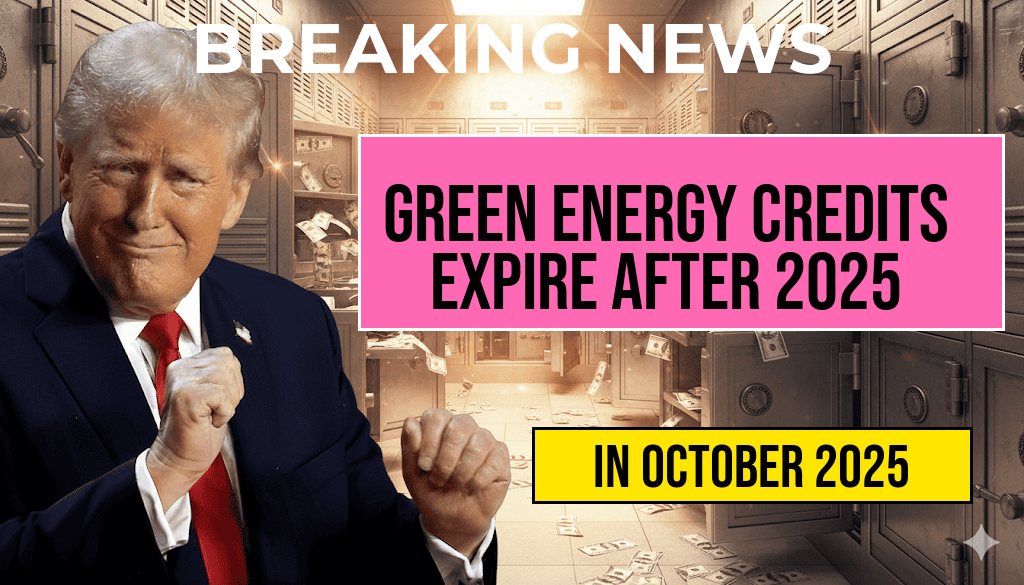The expiration of residential green energy tax credits after 2025 marks a significant shift in the landscape of American renewable energy incentives. Originally introduced to promote the adoption of solar panels, wind turbines, and other clean energy technologies in households, these federal incentives have played a crucial role in driving residential investments over the past decade. As policymakers prepare to phase out these tax incentives, homeowners, contractors, and industry stakeholders are closely monitoring potential impacts on project affordability and future adoption rates.
Since their inception, residential green energy credits have helped reduce the upfront costs associated with installing renewable energy systems, making clean technology accessible for a broader segment of the population. However, with the scheduled expiration of these incentives at the end of 2025, industry experts warn that the pace of residential renewable energy adoption could slow unless alternative policies or market mechanisms are introduced. This transition period is prompting homeowners to evaluate whether to accelerate their projects or wait for possible new incentives, creating a ripple effect across the renewable energy sector.
The Origins and Purpose of Residential Energy Tax Credits
Historical Context and Policy Goals
Federal residential green energy tax credits originated as part of broader efforts to combat climate change and reduce reliance on fossil fuels. The Investment Tax Credit (ITC), established in 2006, initially provided a 30% credit for solar installations on residential properties, a figure that has fluctuated over time. These incentives aimed to lower barriers to entry, stimulate technological innovation, and foster job creation within the renewable energy industry.
Achievements and Challenges
- Significant increase in residential solar installations, with the U.S. surpassing 3 million solar-powered homes as of 2022.
- Cost reductions in solar panel manufacturing, partly driven by increased demand stimulated through tax incentives.
- Challenges include policy uncertainty, regional disparities in incentive availability, and questions about long-term market stability without continued support.
Implications of the 2025 Expiration
Potential Impact on Homeowners and Contractors
With the scheduled end of federal tax credits, prospective homeowners considering renewable upgrades face a pivotal moment. Without the financial cushion provided by these incentives, the upfront costs of installing solar panels or small wind turbines could become prohibitive for some households, especially in states where local incentives are limited. Industry estimates suggest that the average residential solar system cost, around $20,000 to $25,000 before incentives, might see a noticeable increase, potentially deterring new projects.
Contractors and installation companies are likewise preparing for a potential slowdown. Some are actively encouraging clients to act before the credits expire, while others are re-evaluating their service offerings in anticipation of changing demand. The uncertainty surrounding future policy support has also prompted calls for the federal government to consider extending or replacing existing incentives with new programs aimed at maintaining momentum in the transition to clean energy.
What Could Replace or Supplement the Current Incentives?
Policy Proposals and Industry Perspectives
Several policymakers and industry advocates are advocating for alternative measures to sustain residential renewable energy growth beyond 2025. These include:
- Performance-based incentives, such as rebates tied to energy savings or emissions reductions.
- State-level programs designed to complement federal initiatives, especially in underserved regions.
- Financing options like green loans or property-assessed clean energy (PACE) programs that reduce upfront costs without relying solely on tax credits.
Industry leaders emphasize that continued support is vital for meeting national climate targets and maintaining economic gains in the renewable energy sector. Some suggest that a phased approach, combining incentives with market-based solutions, could provide a smoother transition and prevent a sharp decline in residential renewable installations.
Data Snapshot: Renewable Energy Incentives and Adoption Trends
| Year | Number of Homes with Solar | Average Incentive Utilization Rate | Notes |
|---|---|---|---|
| 2015 | 350,000 | High | Beginning of widespread adoption |
| 2018 | 1,200,000 | Moderate | Growing demand, policy stability |
| 2022 | 3,000,000 | Declining | Incentive expiration approaching |
Expert Opinions and Future Outlook
Energy analysts suggest that the expiration of federal tax credits could lead to a slowdown in residential solar growth unless new policies are enacted. Dr. Lisa Chen, an energy policy researcher at the University of California, notes, “The current incentives have been instrumental in scaling residential renewable adoption, but their expiration creates a critical juncture. Policymakers need to consider alternative supports to sustain momentum.”
Meanwhile, some states, including California and New York, are exploring their own incentive programs to fill potential gaps, aiming to keep the industry on a growth trajectory. The coming months will likely see increased advocacy for federal policy adjustments to support consumers and industry stakeholders during this transition.
For homeowners and investors, understanding the evolving policy landscape will be essential. As the 2025 deadline approaches, assessing the timing of renewable energy projects and exploring available local incentives can make a significant difference in project affordability and viability.
To learn more about the history and future of renewable energy incentives, visit Wikipedia’s page on the Investment Tax Credit or consult industry reports available on Forbes Energy.
Frequently Asked Questions
What are Green Energy Credits?
Green Energy Credits are incentives provided to encourage the adoption of renewable energy sources, such as solar and wind power. These credits often reduce the overall cost of installing renewable energy systems for homeowners and businesses.
When do the Residential Tax Incentives for green energy expire?
The current Residential Tax Incentives for green energy are set to expire after 2025. This means homeowners should consider taking advantage of these benefits before they end.
How will the expiration of Green Energy Credits affect homeowners?
Once the Green Energy Credits expire, homeowners may face higher out-of-pocket costs for installing renewable energy systems, potentially reducing the financial attractiveness of such projects.
Are there any ongoing tax incentives for green energy after 2025?
As of now, the tax incentives are scheduled to end after 2025. However, policy changes could occur, so it is advisable to stay informed about updates from relevant authorities.
What options do homeowners have if they want to install green energy systems before incentives end?
Homeowners interested in installing green energy systems should plan to do so before the 2025 expiration to maximize potential tax benefits and incentives. Consulting with renewable energy professionals can help ensure timely installation.






